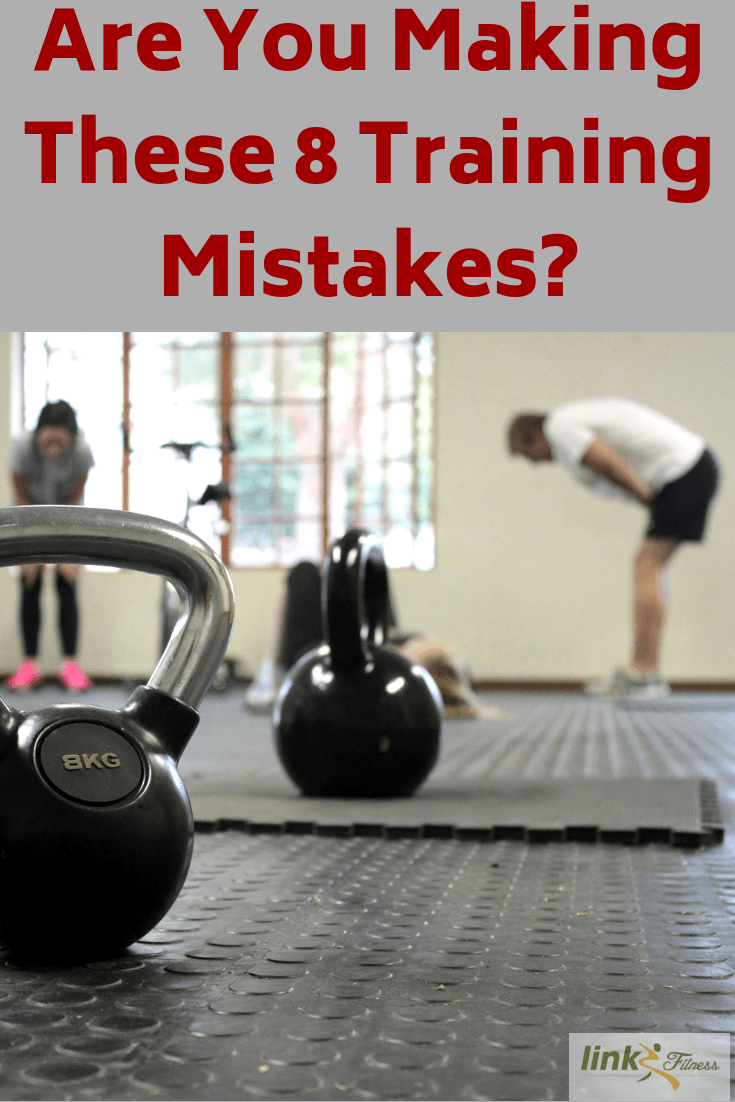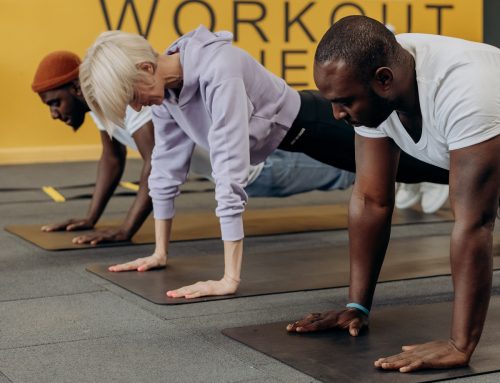Bad workout habits are many and are hard to get rid of. You might find yourself hooked to them without even realizing it.
Just like any other bad habit, you start slowly and before you know it, they become permanent. You become rigid in your ideas and no matter what anyone tells you, you can’t hear any of it and are set in your own ways. These training mistakes are unhealthy and counterproductive.
Go through your exercise routine and analyze it critically. If you are still making these training mistakes, then its time to get rid of them for good.
Below are the most common training mistakes that might be stopping you from achieving your full fitness potential:
Training with no goal
 Once you have made an effort to join the gym, you should take a moment to think about your goals. Do you have both short term and long term goals that you are striving for? Do you have a plan of action or a particular workout that you intend to do every day?
Once you have made an effort to join the gym, you should take a moment to think about your goals. Do you have both short term and long term goals that you are striving for? Do you have a plan of action or a particular workout that you intend to do every day?
If you don’t have a goal, your workouts will be aimless and with no tangible results. You will also lack the motivation to work out because you’ll have nothing to work towards.
Set SMART goals with an attached timeline and check your progress after every 4, 8, or 12 weeks. It is easier to hit a target if you know what the target is.
Goals can range from running a 5K, lifting a certain amount of weight or even stretching for 10 minutes after every workout session.
Doing lightweights with many reps
This is a very common mistake that is most prevalent with women. This myth has been around for ages and has refused to go away. The notion that if you want to get toned, you must lift light weights for countless repetitions is very erroneous.
To be able to gain strength and push your body hard enough to burn fat, lift heavier weights and perform fewer reps. You will not get huge and bulky instead you will become stronger and leaner.
Each time you workout, increase your weights gradually. This is the only way your body will change by adapting to the progressive load that you are subjecting it to.
Avoiding exercises that you are bad enough
It is human nature to do things that we are comfortable with. Same applies to exercise. We avoid anything that is tough or makes us uncomfortable and awkward.
For example, most men will usually find every conceivable excuse to skip training their legs. This results in unbalanced physiques with huge upper bodies and toothpick legs. Such bodies are as a result of poor exercise programs and are prone to injuries because of obvious muscular imbalances.
If you predominantly train your chest and biceps and can’t do a single pull-up, it means your muscles are imbalanced. Your chest is strong and tight but your back is weak and rounded. As a consequence, you’ll develop poor posture.
To fix this problem, make sure you begin your training with the body part that is lagging behind. You can even make a point of training it twice a week and sooner you will be sporting an upright and balanced physique.
Only focusing on isolation exercises
These are exercises that only target a single muscle group such as hamstring curls and bicep curls. Weight training is intended to make us more efficient in our daily activities. These single muscle movements are rarely applicable in everyday life.
Whether you are training for muscular growth, weight loss or fat burning, you will achieve your goal faster if you do exercises that employ several muscles at once such as squats, pushups, and pull-ups.
Focusing on machine-based exercises
In real life, you can never do anything physical sitting down. You have to stand to do stuff. Get up and do exercises that emulate activities in real life such as bending down and up and rotating. Use barbells and dumbbells.
Training with this help engage your core, it’s more athletic, it’s more functional, yields better gains and it’s interesting and fun.
Am not saying all machines are useless. Some do play a crucial role for the beginner exerciser who is still learning about correct posture and proper body mechanics. They are also good for people recovering from injuries who need to improve their strength levels in a stable an controlled manner.
Doing cardio excessively
Are you a cardio junkie? Do you pound the treadmill for hours to burn a certain amount of calories to feel satisfied that you’ve done enough?
Though cardio is good and has its benefits, it is not enough on its own.
Balance your cardio training to reap maximum benefits. If you do less, you are cheating yourself. If you overdo it, you are stressing your body unnecessarily making it produce cortisol which in turn affects your fat burning potential.
The best duration is between 25-45 minutes. Make it intense but short. Beyond 45 minutes you burn muscle tissue and this is counterproductive. Eating into your muscle slows down your metabolism down to a crawl.
Overtraining and no recovery
Everybody wants to be fit. However, even a good thing done to extremes is bad for your well-being. It is important to balance your exercise with rest and recovery. Your fitness levels will improve when you alternate between training and rest.
Remember, your body grows at rest. Therefore, denying your body enough rest is a recipe for injuries and burnout.
If the intensity of your workouts is high, your rest and recovery periods should be longer. There is a limit to how much stress your body can tolerate before it breaks down and gets injured. Don’t push yourself too much.
Not working hard enough
Conversing with your friends when on cardio equipment or having long breaks between sets when lifting weights is a waste of valuable time and energy.
Weight training is and should be intense. If you are able to converse with your friend while on the treadmill, you are simply whiling your time and not working out. If you chatting with your buddy in between sets, your results will be dismal and frustrating.
You will only see better gains if you are always pushing to the point of breathlessness. It’s pointless to spend two hours in the gym, but only end up exercising for only 30 minutes. If you are serious about your training, you only need 45 to 1 hour at most.
If on the other hand, you lack the will to push yourself to the appropriate intensity, hire a Personal Trainer who will help kick your butt and make your time in the gym worthwhile.
As always, am thrilled to hear from you. Which other training mistakes have you come across in your training?





